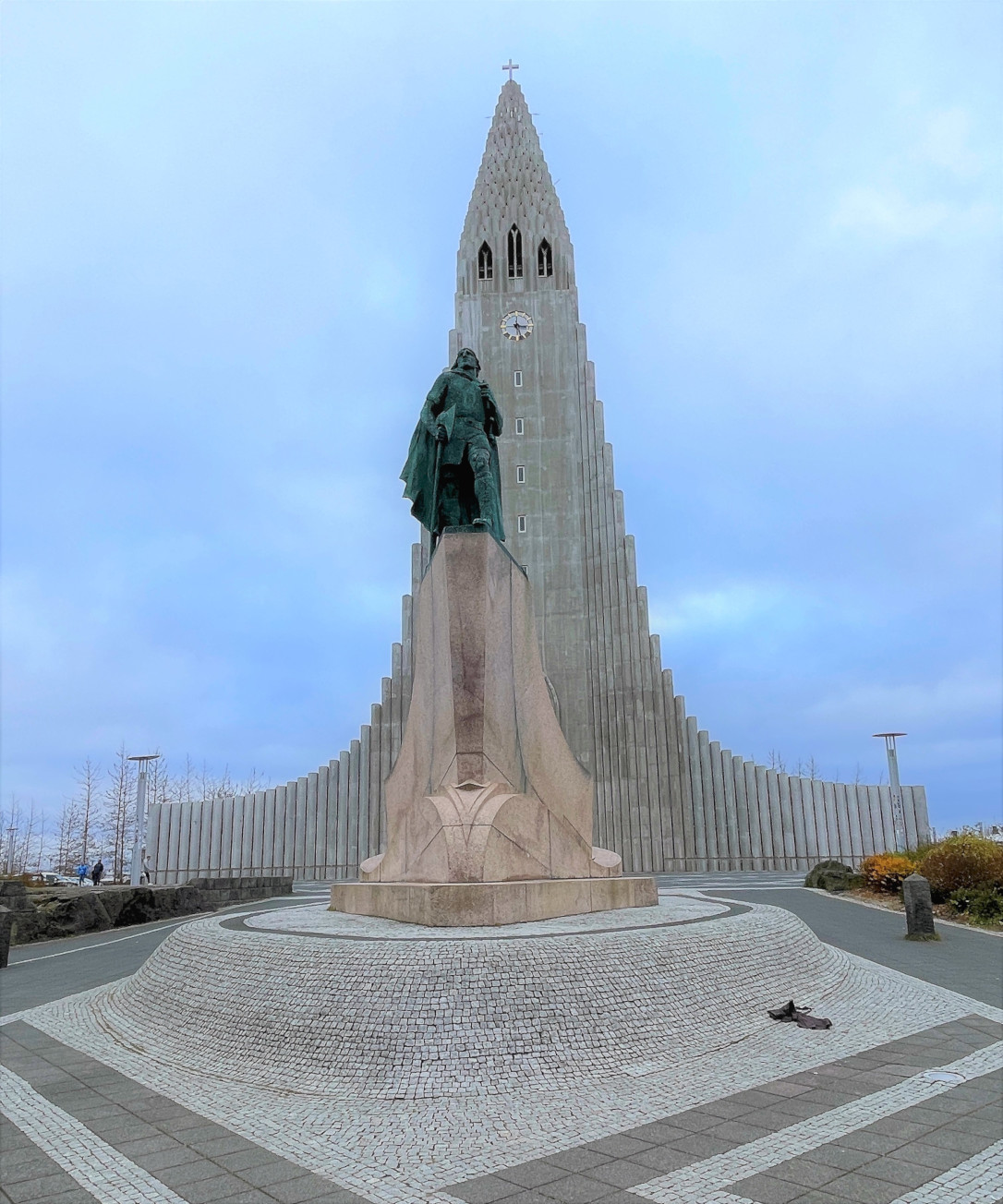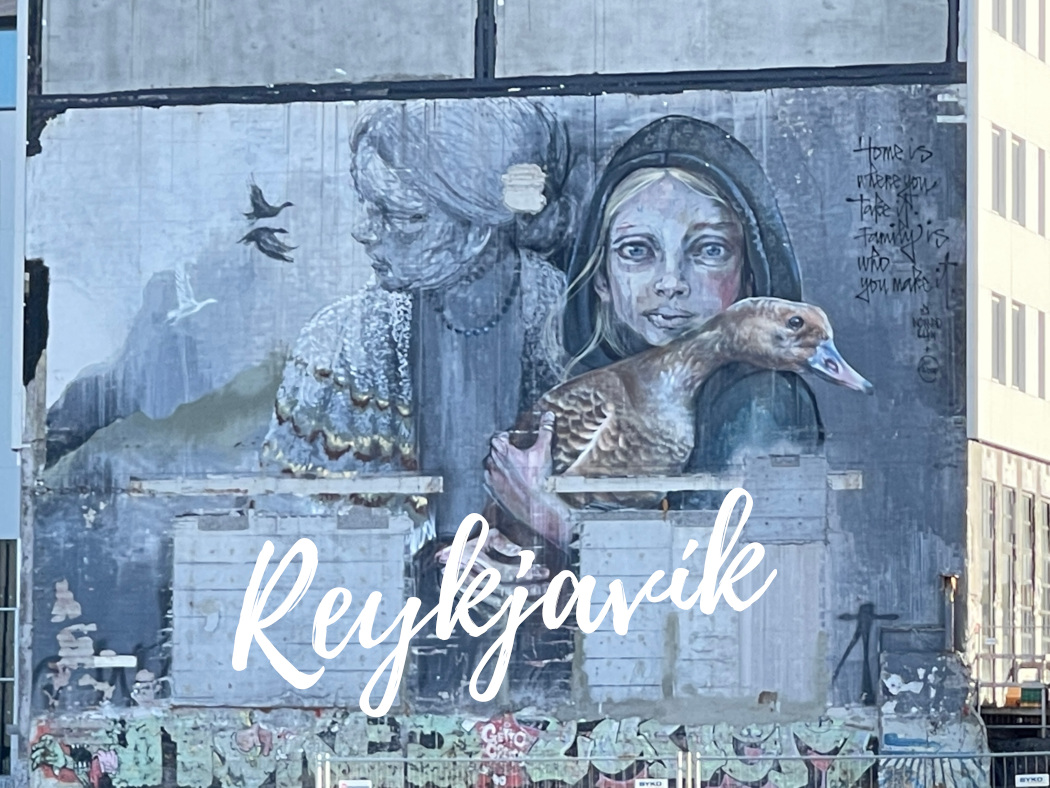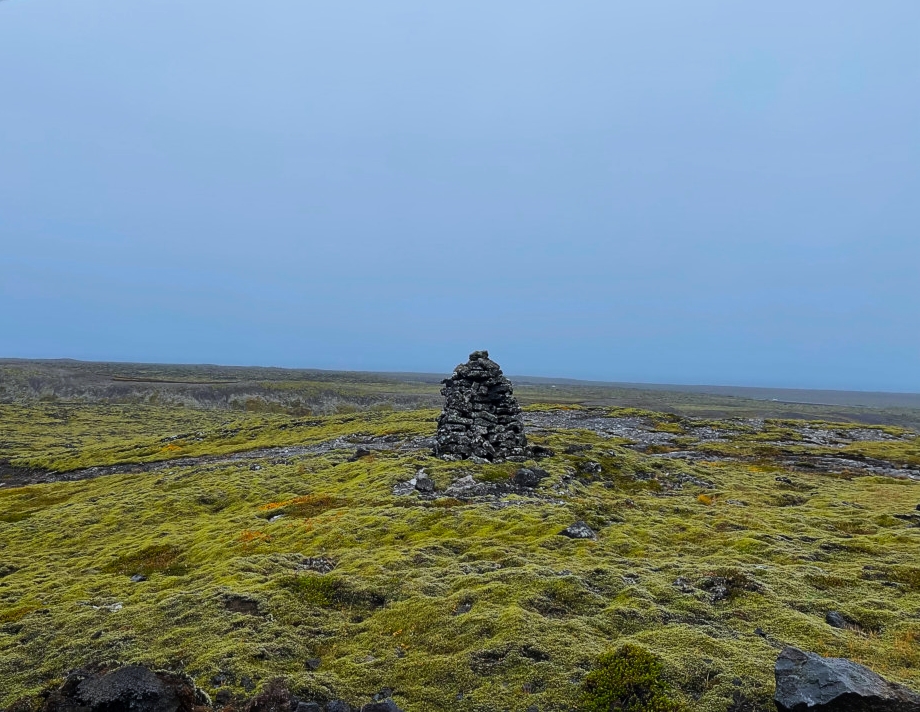How dreams can be a telepathic way of transmitting information
 |
| The childhood home of Helga M. Möller, Hafnarstræti 16 in Reykjavík. |
Visitations by spirits-beings are only one way we come in contact with otherworldly forces. Dreams can also be a way to channel messages through to us. Unfortunately, they are often in codes and we don’t always quite understand how to interpret them.
Just like there are those who are more sensitive to the presence of spirit beings, there are others who are more prone to communication through dreams. Helga Magnea Kristjánsdóttir Möller (1850-1926) was one such individual.
 |
| Helga Magnea Kristjánsdóttir Möller. Photo from Vol. 1, p. 84 of a book series on the Reykjahlíð ancestry (Reykjahlíðarætt 1. bindi bls 84). |
Helga received premonitory dreams for several years. She was, in fact, known for her prophetic dreams. Sometimes she dreamt of events that hadn’t happened yet, but later came true. In other dreams she travelled to far away places and watched things happen. These are called telepathic dreams.
Helga was the daughter of Christian Ludvig Möller (1811-1881) and Sigríður Magnúsdóttir (Norðfjörð) Möller (1821-1896). Her grandparents were the Danish Ole Peter Christians Möller and Christiane Elisabeth Möller (born Hoffman). They arrived in Iceland in 1777.
In 1810 they moved into Hafnarstræti 16. The house was the second oldest house in Reykjavík, the oldest being the house next door, number 18 (built in 1795).
The couple moved around in the area and built other houses and opened more stores.
 |
| Helga’s mother: Sigríður Magnúsdóttir (Norðfjörð) Möller (1822-1896). Arnór Egilsson |
Some years later, Helga’s uncle, Ole, was in Copenhagen and saw his old home for sale in the newspaper. He jumped on the opportunity and purchased it. When he returned to Iceland, he opened up a store and called it Möllersbúð.
Ole and Helga’s dad, C. Ludvig ran a restaurant together in the house. Helga and her six siblings lived on the top floor with their parents. The restaurant was on the bottom floor and gave Ludvig enough profit to provide for his family.
In 1879, the merchant and consul, Martin Smith purchased the house. He turned it into a hotel and called it Hótel Alexandra, after the Danish king’s daughter.
 |
| Hafnarstræti in 1870. Helga’s home, Hafnarstræti 16 is the small house, fourth from the left. Frjáls Verslun |
Helga’s family lineage can be traced to prominent individuals who helped shape and in many ways modernized Iceland. One of the most famous ones is Old Geir Zoëga. Helga’s grandmother’s sister (Helga Ingimundardóttir) had a son, Geir Johanneson Zoëga . He was by many considered one of Reykjavík’s fathers.
 |
| Geir Jóhannesson Zoëga (1830-1917) and his wife, Helga Jónsdóttir Zoëga (1859-1946). Their children: Geir Geirsson Zoëga (1896-), Hólmfríður Geirsdóttir, Kristjana Geirsdóttir and Guðrún Geirsdóttir. Sigfús Eymundsson |
Needless to say, Helga came from well-grounded, intellectual and successful individuals. This was a family known for establishing businesses and not for otherworldly phenomenon. My guess is that Helga kept her revelatory dreams to herself for quite some time.
In January 1873, Helga married (marriage announcement) the newly graduated priest, Rev. Jón Þorsteinsson (1849-1930).
After Hafnarstræti 16, Helga’s homes were with her husband in various vicarages across the country. Her revelatory dreams followed her as a fixture to the soul. She began sharing her dreams with her husband and interpreting the symbolisms within them.
 |
| Helga’s husband, Rev. Jón Þorsteinsson. ismus.is |
Their residence was dependent on which parish Jón was called to serve at. During their marriage, he was called to several parishes:
Skútustaðakirkja March 25th 1874-1877
Húsavíkurkirkja (The old church) November 29th 1877-1879
Lundarbrekkukirkja August 29th 1879-1898
Sauðaneskirkja 1898-
Skeggjastaðakirkja February 28th 1906-1907
Möðruvallaklaustur 1907-1928
He passed away only four years after Helga and was buried with her at Möðruvellir Cemetery (church no. 3 in photo below).
 |
| 1. Húsavíkurkirkja. The old church in Húsavík; 2. Skeggjastaðakirkja; 3. Möðruvallakirkja in Hörgárdalur; 4. Skútustaðakirkja; 5. Lundarbrekkukirkja; 6. Sauðaneskirkja |
Helga’s dreams were sometimes messages of family tragedies. Her brother, Ole Peter Christian Möller (1854-1917) had suffered great losses in his life. In this post I will share two of Helga’s dreams about his losses.
 |
||
| Helga’s brother, Ole Peter Christian Möller (1854-1917), merchant in Blönduós. He was considered a good man and guests were always welcome in his home. Héraðsskjalasafn Austur-Húnavatnssýsla | |
Right after new year, in 1883, Helga’s brother, Ole, purchased three houses in Hólanes, one as their home, another as their store and the third as storage. The family was having a great success with their store and were looking forward to celebrating Christmas and a prosperous year.
The same year, on the night of Dec. 24th, 1883, all three houses burned to the ground and much of what was inside was lost. With no home insurance and a minimal insurance for the structure, Ole sailed to Copenhagen shortly after the fire.
 |
| Hólanes as in 1857. sarpur.is |
When Ole returned from Copenhagen in the spring of 1884, he brought with him a house and merchandise.
In 1888 he moved to Blönduós and became a sales manager for his very successful brother, Jóhann. With success under his belt and a knack for accounting, he moved his family to Hjalteyri in 1897 where he ran his own store. It was called Möller’s House on Hjalteyri.
 |
| Left: Möller’s House today. It goes by the name “Gamla Hótel” or “Old Hotel”. Right: The Möller’s Houses as they looked in 1977. The small house on the left was the old house. It turned out to be too small for a family with seven kids, so Ole built a larger house next door (built 1900). The small house (built 1897) has since been torn down. For the most part, Ole sold fish and herring. He ran a quality business and for some time, his fish was considered the best quality product in the big city of Copenhagen. minjastofnun.is |
The night before November 1st, 1900, Helga was in Sauðanes sound asleep. Suddenly, she found herself in a place she didn’t recognize. She looked around, trying to figure out where she was. The houses looked familiar, but couldn’t quite place them. As she studied them, she realized she was in Hjalteyri where her brother Ole lived.
 |
| Sauðanes church and vicarage. Photo is taken sometime from 1900-1905. Sarpur.is |
 |
| “It is believed that there was a church at Sauðanes since the 12th century. The priest’s residence at Sauðanes (Sauðanes House) was built in 1879 and Sauðaneskirkja church in 1889. The old priest’s house is the oldest stone house in Þingeyjarsýsla district and was made from stone brought from far away but cut on site.” National Museum of Iceland |
|
Helga had been there once before and recognized the pond that bordered the ocean. The pond was ice-covered. She saw a man running along it as if there was something urgent going on. Suddenly she heard someone shout, Oh my God! he is sinking.
A boat was pulled out on to the ice to break it. Helga noticed a man standing by her, so she asked him what was going on. The man told her they were trying to save a guy who fell through the ice in the pond.
Her husband, Jón, and their friend, Snæbjörn Arnljótsson, were there as well. Snæbjörn said to Jón, You tell sister Helga this, because the loss is personal to her.
Then she woke up.
|
| Snæbjörn from Helga’s dream is the man in the front between two ladies. This is a photo of the wedding between Jóhanna Arnljótsdóttir and Evald Hemmert. The house in the background is Snæbjörn Arnljótsson’s house on Þórshöfn in Langanes. From top left: Jón Sigfússon, Þorsteinn Skaptason, Valgerður Arnljótsdóttir, Skapti Jósefsson, Helga Magnea Möller, Rev. Jón Þorsteinsson and Kristján Jónsson; Mid row: Þorsteinn Arnljótsson, Evald Hemmert, Jóhanna Arnljótsdóttir Hemmert, Arnljótur Ólafsson and Hólmfríður Þorsteinsdóttir; Bottom row: Halldóra Arnljótsdóttir, Snæbjörn Arnljótsson and Ingibjörg Skaptadóttir. Jón J. Árnason |
Seven days later, on November 8th, 1900, a ship arrived with a letter from Snæbjörn to her husband, Jón. The letter was to the effect of
Late in the day on November 1st, Jón, [Ole’s son], went out on the ice to go ice skating. The ice had just recently settled and was still thin. The ice broke and he fell through. Several men ran out trying to save him but weren’t able to. One man almost drowned trying to save him, but he was saved by the boat that was brought up to break the ice. But Jón drowned.
Snæbjörn ended the letter with the words: You tell sister this, because the loss is personal to her.
 |
| The photo on the right is a zoomed in image of Jón. On the left is the family photo with all their children alive and well. In the photo: Ole Möller (1854-1917) and his wife Ingibjörg Gísladóttir (1853-1942) with their children. From top left: Reykjavík Minister, Jakob Ragnar (1880-1955), Jóhann Jón Vilhelm (1878-1900), Christian Ludvig (1876-1951), Sigríður (1885-1907), Sigurlaug (1889-1907), Anna (1892-1908) and Haraldur (1895-1921). Héraðsskjalasafn Austur-Húnavatnssýslu |
One of the men at the pond that day was Dr. Valdimar Erlendsson (1879-1951). Before he became a doctor, he stayed at the Möller’s residence in November 1900. Him and Ole’s son, Jakob, were attending school together.
On November 1st, Valdimar was ice skating out on the pond when he saw a polynya (opening in the water surrounded by ice) right in front of him. At that very moment he heard cracking in the ice. He quickly turned around and made it off the ice safely.
 |
| Hjalteyri. The white house with the blue roof was the Möller’s home. The pond is on the left by the ocean. horgarsveit.is |
 |
| Postcard of Hjalteyri. Photo taken sometime between 1905 and 1920. Möller’s two houses can be seen in the back row of homes. A tiny gray-looking house and a larger white house next to it. The pond can be seen on the left. sarpur.is |
On his way back to the house, he met Jón with skates in his hands. He told Jón about the polynya and begged him not to go out on the ice. I know the pond better than you, Valdi, said Jón and continued on his way to the pond.
Only about ten minutes later, a call for help came from the pond. Jón had fallen into the pond and was struggling to hold on to the fragile edge. The men rushed out with a pram (flat bottomed boat). When they were half way out on the pond, Jón lost his grip and sank. They were able to get Jón out of the water and off the ice. Dr. Sigurður Kvaran Hjörleifsson (1862-1936) tried to revive him, but was not successful.
 |
| Dr. Sigurður was the brother of Einar Kvaran, a famous author and the founder of the Experimental Society (the spiritist society). Read about him in my previous blog . The photo is of the three Kvaran brothers: Einar H. Kvaran is sitting on the chair. Back row from left: Sigurður H. Kvaran and Jósep H. Kvaran. Sigfús Eymundsson |
In 1907, seven years after the tragic loss of Jón (and ca. 24 years since the devastating fire), Ole and his wife suffered the loss of two daughters. Sigurlaug (8) and Sigríður (12) died from tuberculosis only two months apart.
Having lost three children, they soldiered on and felt lucky their surviving children were strong and healthy. But, Helga wasn’t done dreaming about her brother. After the death of the two girls, she had another distressing dream.
 |
| From the left: Sigríður Ólína Möller (1885-1907) died quietly in her mother’s arms on March 1st. and Sigurlaug Möller (1889-1907) died May 1st. Zoomed-in image from Héraðsskjalasafn Austur-Húnavatnssýslu |
 |
| A model of Möðruvellir. Here you can envision the scene in Helga’s dream. Description of structures: 1. Vicarage; 2. Church; 3. Old Cemetery 4. Farmhouse. Other historical structures on the site that are not mentioned in this blog are 5. Friðriksgáfa (Friðrik’s gift – as in the Danish king Friðrik VI. This building was the king’s gift after the monastery that was once there burned down); 6. Nonnasteinn (“Nonni’s Stone” is a memorial stone to honor Nonni or Jón Sveinsson 1857-1944 who was the first Icelander to become a Jesuit priest. He is also known for his children books . His brother, Manni became a character in one of his books called Nonni and Manni. This was made into a TV series ) in 1988; 7. Stable; 8. Theatre; 9.archealogical remains; 10. Stefánsfjós (“Stefán’s barn” was built by the principle Stefán Stefánsson 1863-1921 after the fire in 1902); 11. The new cemetery; 12 Horse pen (round pen) |
In the summer of 1907, soon after the girls had passed on, Helga dreamt she was standing on the front step of her home in Möðruvellir. A man on horseback was approaching the north side of the farmyard. He was carrying a large bag filled with green grass and lots of flowers, but in his hand he held a scythe.
She then heard the steward/household manager, Sigtryggur Þorsteinsson, call out What is this? Where are you going?
The man on the horse didn’t answer, but stretched one hand out towards Sigtryggur. Helga noticed the man was wearing a large gold ring on his finger. It was cracked in three places. The strange man said, This ring I received from Ole Möller.
 |
| Sigtryggur Þorsteinsson (1873-1961). sarpur.is |
In that moment, with razor sharp eyes, the man turned his head towards Helga. Without saying a word, he got off his horse and with a fast pace headed over to the stairs where she was standing. She became more terrified with each step he took. The man was nasty and shady looking.
As she stood there, increasingly terrified, the man turned his head southward towards the field. Two men on horses were hastily approaching. The man appeared to be startled by this and rushed back to his horse and took off southward across the courtyard, riding passed the two men.
The men arrived at Helga’s doorstep. She recognized them. It was Dr. Guðmundur Hannesson from Akureyri and his companion.
Guðmundur greeted her. With a big sigh of relief, Helga said, Oh how relieved I am that you came at this moment. I was so afraid of the man that passed you on the way. I wonder who he is.” Guðmundur laughed a little and said, That was Death. He doesn’t like us doctors.
Then she woke up.
 |
| Dr. Guðmundur Hannesson 1866-1946. Dr. Guðmundur Hannesson played an important role for the Experimental Society in Reykjavík. He was a very skeptic man and quite possibly borderline atheist. He was not a big believer in life after death. After attending a séance, he was convinced there had to be chicanery behind it all. After a year long in-depth controlled observation of the their medium, Indriði Indriðason, he was eventually convinced the medium was in fact the real deal. You can read more about this in a book I’m working on . althingi.is |
When Helga woke up, she told the others in the house about her dream. Then the following night, Helga’s husband, Jón, became very ill very quickly. Some of the residents in the house believed her dream was a premonition for his death. But that was not to be. He survived his illness. It would take about six months for her to realize the meaning of her dream.
Her brother Ole had lost two of his daughters earlier that year to Tuberculosis, but one daughter was still alive and was in great health. In 1907-1908, the measles hit hard in Iceland and Ole’s surviving daughter became infected and died shortly after.
When Helga heard the devastating news, she realized the meaning of her dream. The three sisters were the three cracks in the man’s (Death’s) gold ring. The green grass and the flowers Death carried in the bag signified the many individuals who had died from the measles that year.
Only 13 years later, in 1921, they lost another son to Tuberculosis.
 |
| Ole and his wife, Ingibjörg lost five of their seven children. They lost all three daughters within one year of each other to tuberculosis and the measles. Top row from left: Sigríður Ólína Möller (1885-1907) died quietly in her mother’s arms on March 1st.; Sigurlaug Möller (1889-1907) died May 1st.; Anna Möller (1895-1908) died on Feb 11th from the measles; Bottom row from right: Jóhann Jón Vilhelm (1878-1900) drowned and Haraldur Möller (1895-1921) died from tuberculosis in December. |
 |
| Möðruvellir screenshot from GoogleMaps. 1. The church and the old cemetery; 2. The vicarage; 3. The service house (where the caretakers lived). GoogleMaps
|
 |
| Möðruvellir right before the year 1900, seen from southeast. If you look closely, you can see the turf house between the two houses. What used to be Friðriksgáfa has now become a school building and right in front of the turf house was the principal’s house. bokin.is
|
 |
| Möðruvellir 1836 seen from the north side. Back then it consisted of a turf house and Friðriksgáfa slightly south of it. ruv.is |
 |
| Sauðanes vicarage. Helga is standing under the window to the right. She is the woman to the left. Sarpur.is |
 |
| Sauðanes church where Helga’s husband served for a short time at the turn of the century. Katrin Sif |
Helga’s dreams were many and the history of the places she lived play important parts in Icelandic history. With this in mind, I will be sharing more of her dreams in my next post as well.
Ole Peter Christian Möller (Icelandic)




